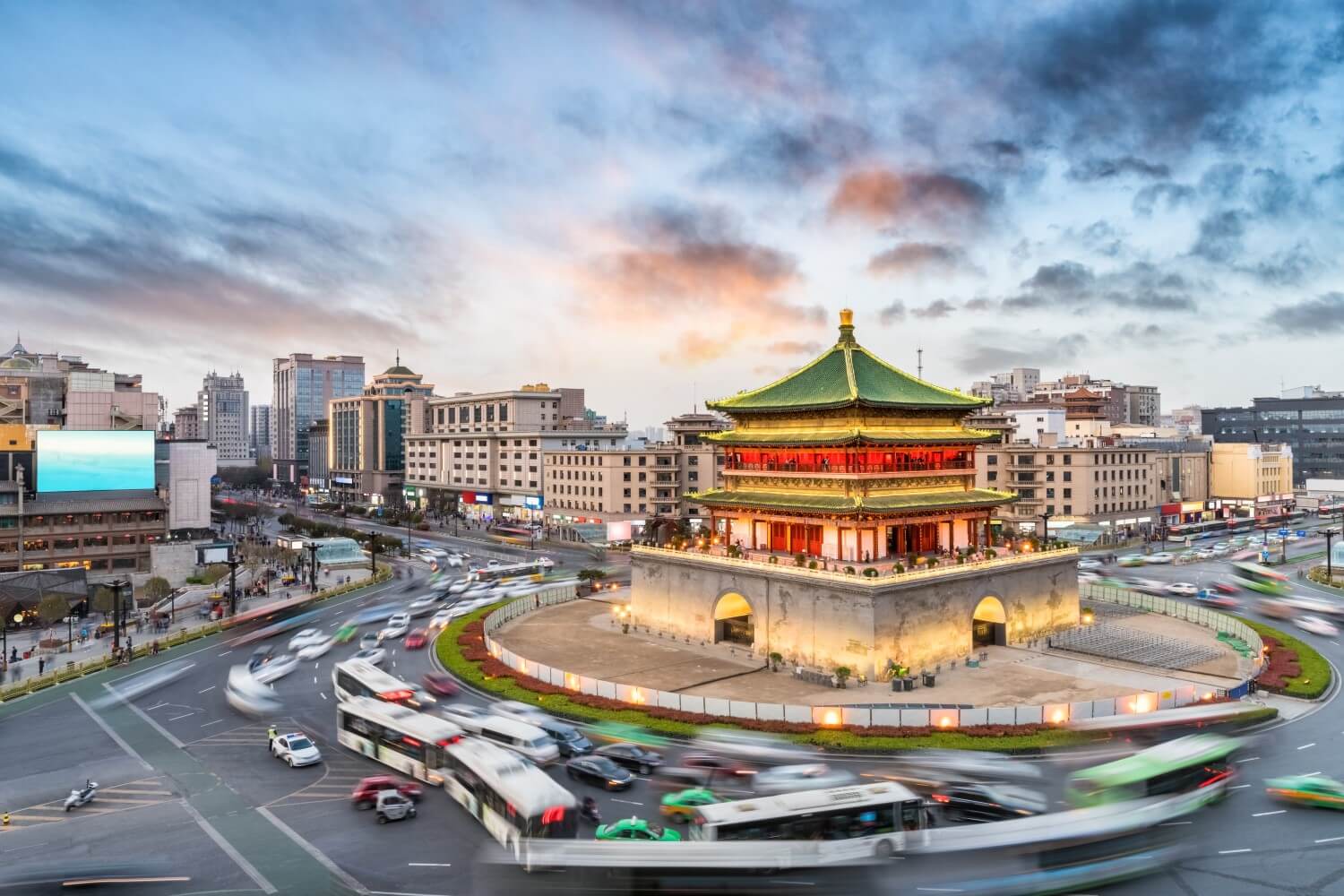
Xi’an is the beating heart of ancient China — a city where history becomes tangible.
As the starting point of the legendary Silk Road, Xi’an has long been a crossroads of cultures, trade, and timeless stories. Its mighty city walls and the world-famous Terracotta Army transport you back to the age of emperors and warriors. In the narrow streets, you’ll taste traditional delicacies and feel the vibrant energy of a city that never rests. Xi’an is a perfect blend of old and new, where ancient traditions are still very much alive. Step into the past that shaped China and continues to capture the imagination today.
In this Travel Guide…
Plan your Trip!
- Flights to China? Book them here via SkyScanner!
- Accommodation in Xi’an? Book your Hotel here via Booking or Book your Hostel via Hostelworld!
- Looking for fun activities? Book your Tickets & Tours here via GetYourGuide!
- Traveling by train? Order your Train Tickets here via Trip.com!
A Brief History
Xi’an, once known as Chang’an, is one of the oldest cities in China with a history dating back more than 3,000 years. As the capital of no fewer than thirteen dynasties, including the Qin, Han, and Tang dynasties, Xi’an was the political and cultural center of the Chinese empire. Its strategic location made the city an important hub of trade, culture, and power, and it became the starting point of the famous Silk Road that connected China with the West.
During the Qin dynasty (221–206 BCE), Xi’an rose to become the center of power under Emperor Qin Shi Huang, the first emperor to unite the country. His legacy lives on in the impressive Terracotta Army—thousands of life-sized statues of warriors and horses guarding his mausoleum. Later, under the Han and Tang dynasties, Xi’an flourished as a cosmopolitan metropolis where traders, artists, and scholars from all over Asia gathered, contributing to the cultural richness that the city still breathes today.
With the decline of the imperial empire, Xi’an lost some of its former glory in later centuries, but its historical treasures were preserved and today attract millions of visitors. The ancient city walls, temples, and museums tell the story of a city that played a crucial role in shaping China throughout the centuries. Visiting Xi’an means stepping not just into a city, but into living history filled with power, mystery, and cultural exchange.
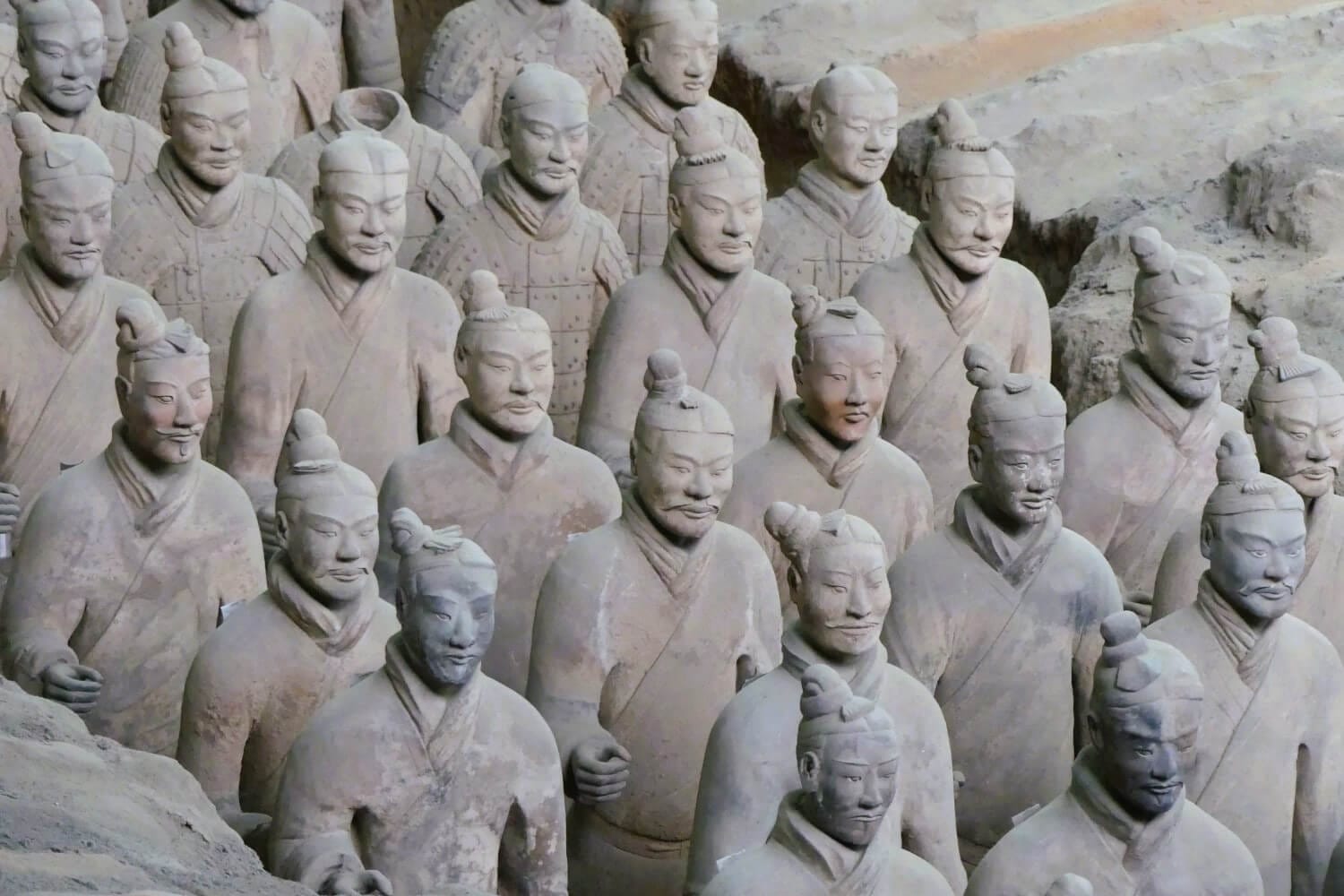
Practical Info: Best Time to Visit and How Many Days?
The best time to visit Xi’an is in spring (April to June) and autumn (September to November). During these periods, you can enjoy pleasant temperatures and less rainfall, making it ideal for exploring the many historical sites such as the Terracotta Army and the ancient city walls. Summers can be very hot and humid, while winters are cold and sometimes harsh, with temperatures that can drop below freezing. During national holidays like Chinese New Year and the Golden Week, it is often crowded, so it’s better to plan your visit outside these peak times.
For a complete and relaxed visit to Xi’an, a stay of at least three to four days is recommended. This gives you enough time to discover the main highlights, such as the Terracotta Army, the city walls, the Bell Tower, and the lively Muslim Quarter. Those with more time can also explore surrounding historical sites and museums or take a day trip to nearby places like the Huashan Mountains. This way, you not only experience Xi’an’s rich history but also the unique atmosphere of this fascinating city.

Top 10 Attractions in Xi’an
Xi’an is a city bursting with history and culture, offering a wealth of sights that bring the past to life. Here are the ten most impressive historical sites you shouldn’t miss during your visit to Xi’an.
1. The Terracotta Army
The Terracotta Army is one of the most spectacular archaeological discoveries in the world, consisting of thousands of life-sized clay figures of soldiers, horses, and chariots. These statues were created to protect Emperor Qin Shi Huang in the afterlife. Each soldier has a unique face and armor, highlighting the high craftsmanship. The complex is located about 40 kilometers from downtown Xi’an and is an absolute must-see.
2. The Ancient City Walls of Xi’an
Xi’an’s city walls are among the best-preserved ancient city walls in China, encircling the historic center with a length of nearly 14 kilometers. They date back to the Ming dynasty and offer stunning views of the city from the high ramparts. You can walk or cycle on the walls, or even rent electric scooters for a unique experience. The walls provide a tangible impression of the city’s military and urban history.
3. The Bell Tower
The Bell Tower stands in the heart of Xi’an’s city center and was built in 1384 during the Ming dynasty. It was originally used to warn the city of danger and marks the intersection of the old city. The tower has been beautifully restored and houses a large bronze bell that is still rung for special occasions. From the top, you get a magnificent view of the bustling city life below.
4. The Drum Tower
Not far from the Bell Tower is the Drum Tower, also from the Ming period, which was traditionally used to signal the time. Large drums were beaten here during special events or to alert the population. Today, you can visit the Drum Museum and learn about the tower’s role in daily life centuries ago. It’s also a popular starting point for exploring the nearby Muslim Quarter.
5. Het Muslim Quarter
The Muslim Quarter is the heart of the Hui culture in Xi’an and is famous for its lively markets and street food. Here you can taste authentic local specialties like roasted lamb skewers and delicate noodle dishes. Besides the culinary delights, you’ll find historic mosques and traditional shops. The area is a colorful mix of culture, history, and modern bustle.
6. The Great Wild Goose Pagoda
This Buddhist pagoda was built in the 7th century during the Tang dynasty to house Buddhist scriptures brought from India by the monk Xuanzang. The pagoda is an important religious monument and a symbol of Xi’an. Surrounding the pagoda is a beautiful park with fountains and cultural events. It’s a peaceful spot that contrasts with the busy city life.
7. The Shaanxi History Museum
This museum is one of the largest and most prestigious history and art museums in China, offering a comprehensive overview of the region’s rich past. You’ll find thousands of artifacts, from prehistoric finds to Tang dynasty art. The museum is modern and perfect for deepening your understanding of Xi’an and Chinese history. A visit here is ideal if you want more context for what you see in the city.
8. The Banpo Neolithic Village
Just outside Xi’an lies Banpo, an archaeological site revealing one of China’s oldest Neolithic settlements. The site dates back to around 5,000 BCE and shows how people lived in prehistoric times, with remains of houses, pottery, and tools. Banpo offers a fascinating glimpse into daily life thousands of years ago. The museum at the excavation site helps visitors understand the significance of these findings.
9. The Small Wild Goose Pagoda
This pagoda, less famous than the Great Wild Goose Pagoda, was built in the 8th century and is a beautiful example of Tang architecture. The pagoda features an elegant design and is surrounded by a quiet garden with art and calligraphy. It once served as a storage place for Buddhist scriptures and statues. It’s an ideal spot for those seeking tranquility and spiritual atmosphere in Xi’an.
10. Hanyang Wall Park
Hanyang Wall Park contains the remains of the ancient city walls from the Qin and Han dynasties, the earliest walls of Xi’an. Although these walls are not as imposing as the Ming walls, they offer a unique glimpse into the city’s earliest history. The park is green and peaceful, perfect for a relaxing walk while reflecting on the origins of this great city. Here, you can literally feel the long history beneath your feet.
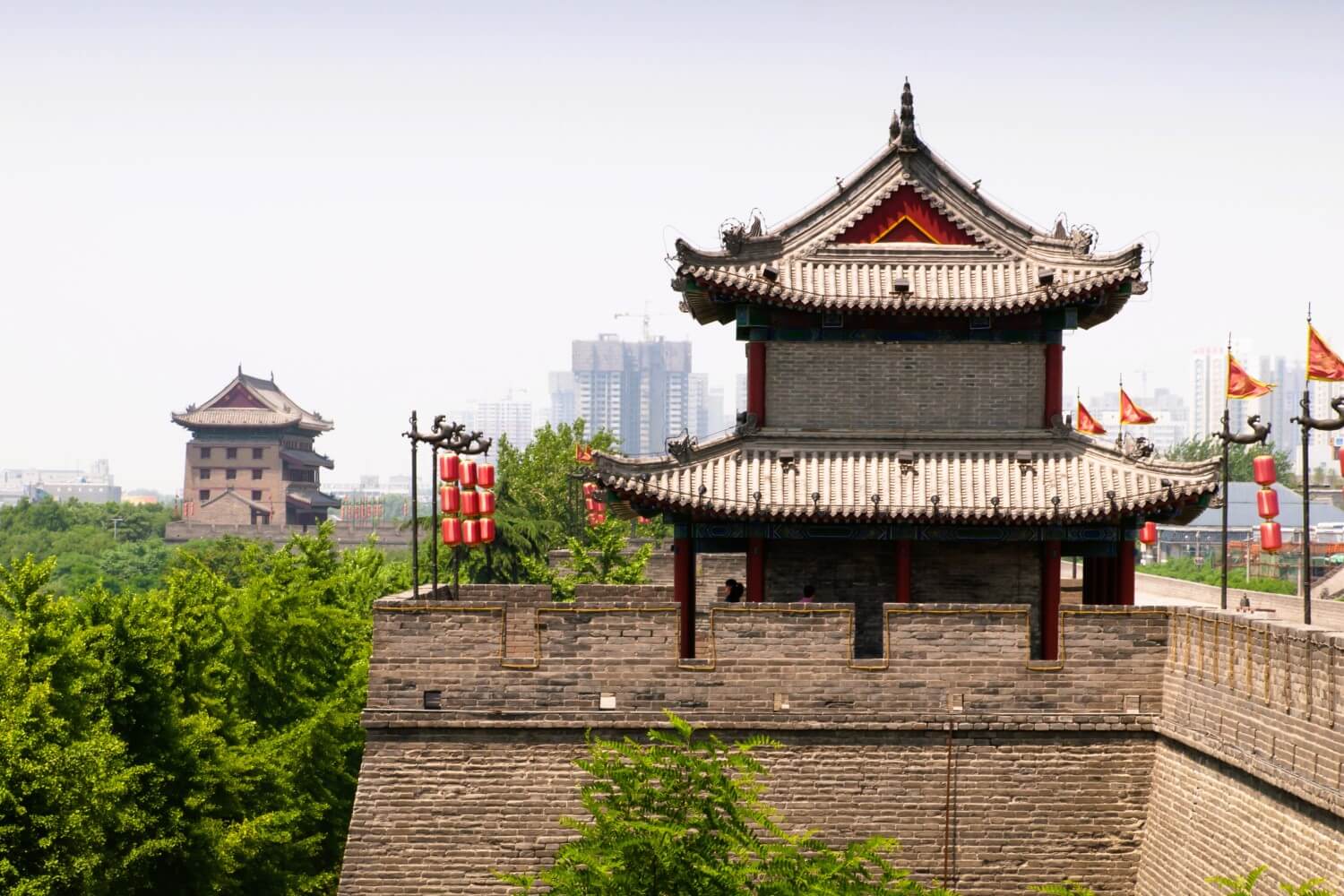
Accommodation: Where to Stay?
Xi’an offers a wide range of accommodation options, from charming boutique hotels within the ancient city walls to modern luxury hotels overlooking historic landmarks. Those who want to be close to the action are best off staying near the Bell Tower or the Muslim Quarter — ideal for exploring the illuminated city walls, markets, and food stalls on foot in the evening. For an authentic experience, there are also renovated traditional courtyard houses (siheyuan) serving as guesthouses, often featuring charming courtyards and a peaceful atmosphere. Budget travelers will find numerous hostels and simple inns throughout the city with good amenities.
For those seeking comfort and service, there are several four- and five-star hotels with spacious rooms and international facilities in the modern suburbs or around the southern city gate. Many of these hotels also offer tours to the Terracotta Army or other attractions. Travelers who prefer to avoid the crowds can choose to stay just outside the city center, for example near the Great Wild Goose Pagoda or in the university district. Wherever you stay, Xi’an is compact and easily accessible, so you are always close to the rich history this city has to offer.
Looking for accommodation in Xi’an? Book your hotel or hostel here.
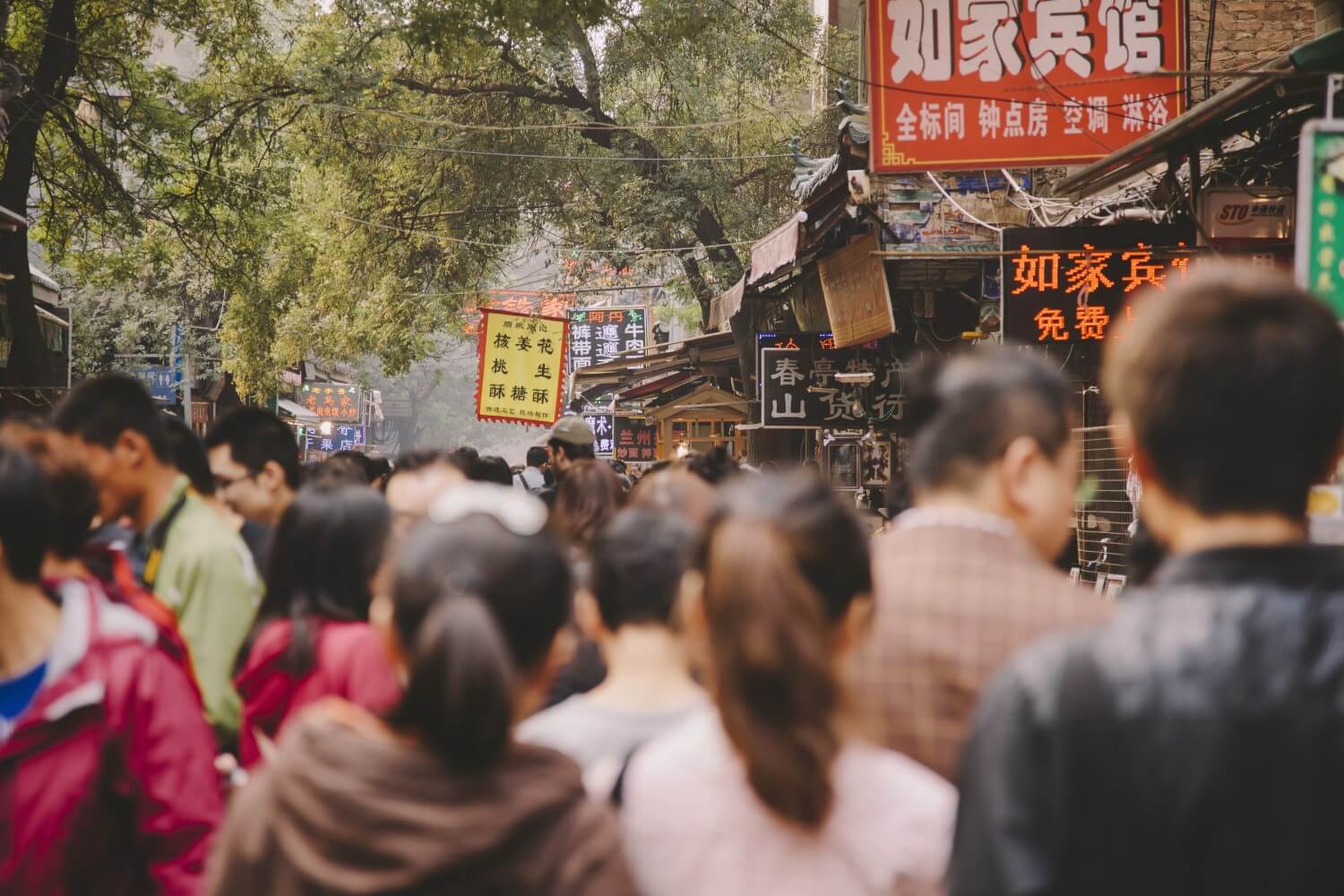
Food & Drink
Xi’an is known as one of China’s culinary capitals, with a cuisine strongly influenced by the Silk Road and the Islamic Hui minority. One of the most famous local specialties is roujiamo, often called the “Chinese hamburger”: spiced meat inside a crispy, flat bread bun. Biangbiang noodles, named after the Chinese character with the most strokes, are also beloved — wide, hand-pulled noodles served with spicy sauces and vegetables. The flavors in Xi’an are often rich, savory, and mildly spicy, with generous use of garlic, cumin, and chili.
A visit to the Muslim Quarter is a must for anyone wanting to truly experience the local food culture. Here, you can sample dishes like grilled lamb skewers, steamed dumplings (jiaozi), and sweet date cakes, all freshly prepared on the street. Don’t forget to try a bowl of yangrou paomo: a savory soup with flatbread and lamb, where you tear the bread into pieces yourself. Xi’an offers a flavorful journey through time and tradition, where every street corner surprises you with scents, colors, and centuries-old recipes.
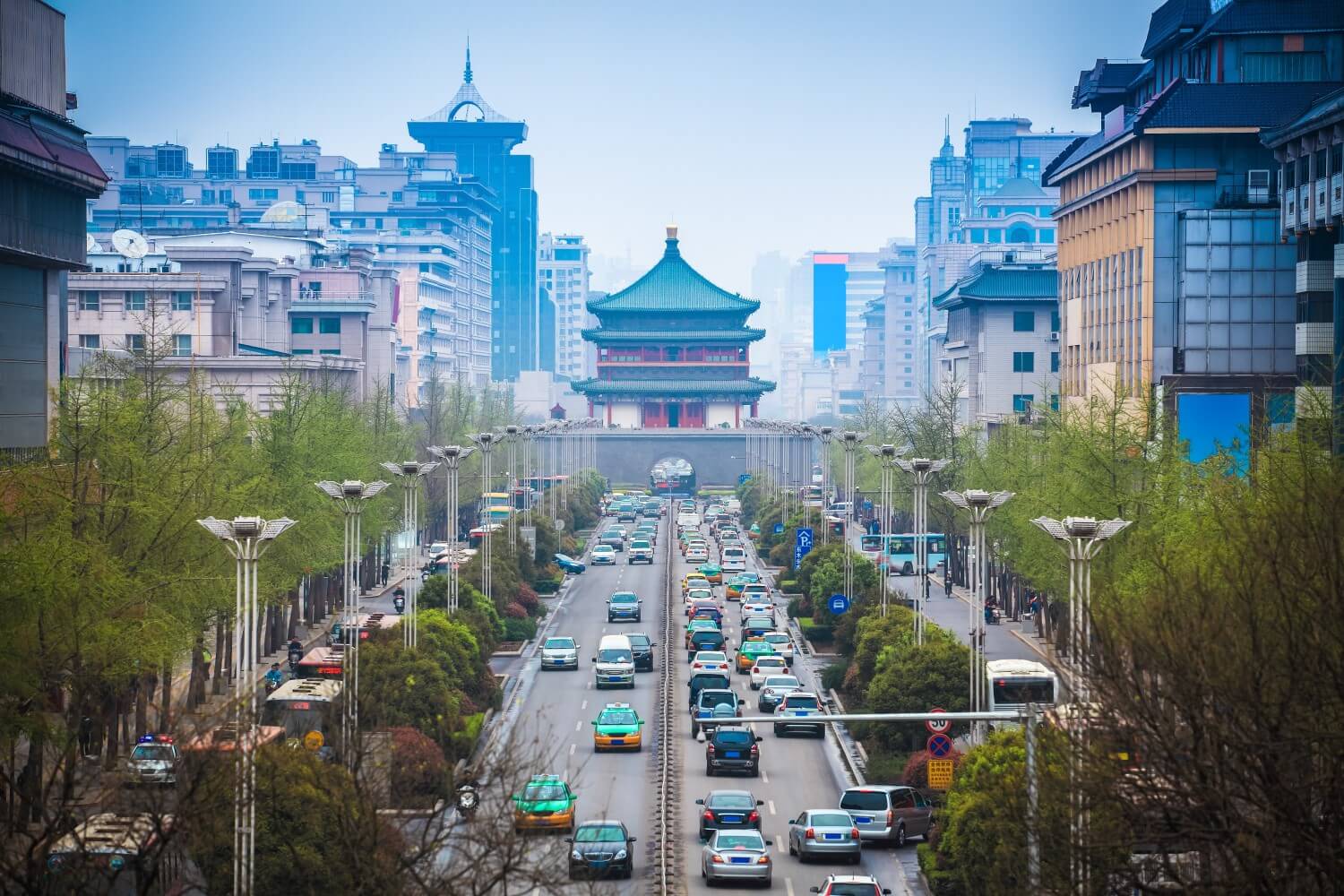
How to Get to Xi’an?
Xi’an is easily accessible thanks to its central location in China. The city has an international airport (Xi’an Xianyang International Airport) with direct flights to major Chinese cities and some international destinations. For domestic travelers, the high-speed train is an excellent choice: from Beijing, Shanghai, or Chengdu, you can reach Xi’an comfortably within a few hours. Long-distance buses and regular trains also connect Xi’an with numerous cities across the country.
Once in Xi’an, you can easily explore the city using a mix of modern and traditional transport options. The metro system is straightforward, affordable, and quickly takes you to key locations like the Bell Tower, the train station, and the Great Wild Goose Pagoda. Many attractions within the old city walls are within walking distance of each other, and cycling along the city walls is a popular and unique way to experience the city center. For shorter trips, taxis, shared bikes, and electric scooters are convenient and widely available, while organized day tours are ideal for excursions to the Terracotta Army or the Huashan Mountains.
Want to Read More? The Best Blogs About Xi’an

The Amazing Terracotta Army of Emperor Huangdi
Visiting the magnificent Terracotta Army just outside the city of Xi’an? What is the story behind this impressive army? In this article, you’ll learn all about it!
Do you have any tips, comments, or ideas for this travel guide about Xi’an? Feel free to leave a message below!
Return to: